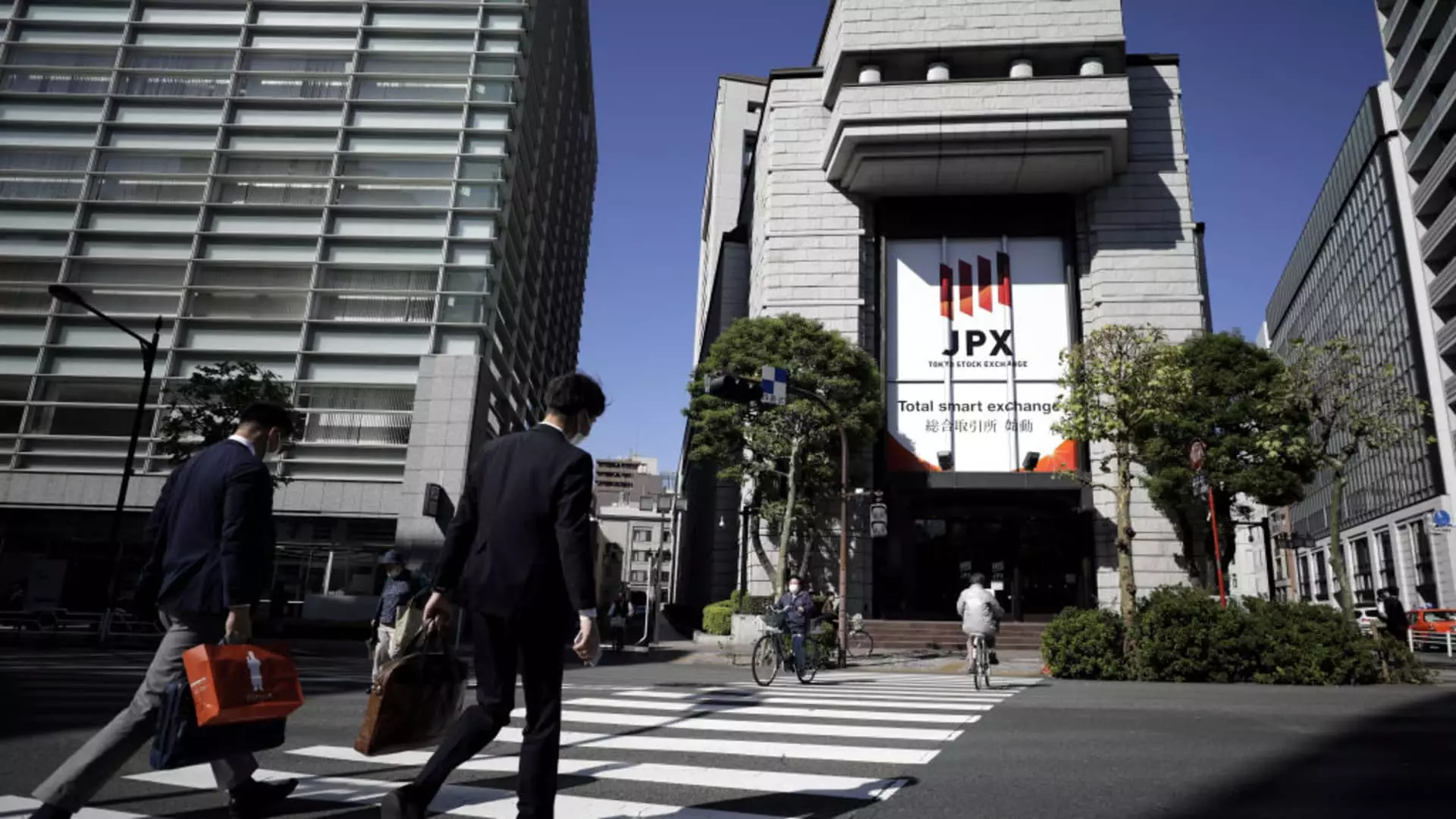On Thursday, Asian markets saw a decisive rally led by Japan, presenting itself as an optimistic outlier against the backdrop of rising global tensions. The Nikkei 225 surged by an impressive 2.57%, while the broader Topix index followed closely with a 2% increase. This bullish trend in Japan comes on the heels of Wall Street’s modest gains, highlighting a moment of positivity amidst international uncertainties, particularly spurred by volatile situations in the Middle East.
The strength of Japan’s stock market, however, stands in stark contrast to the weakening value of the yen, which dipped to as low as 146.54 against the U.S. dollar. This depreciation raises questions about the currency’s stability and reflects broader economic concerns. The simultaneous stock market gains and currency decline suggest a complex interplay of investor confidence and economic fundamentals.
Shigeru Ishiba, Japan’s newly appointed prime minister, recently communicated a cautious economic outlook, stating that current conditions do not warrant a rate hike. His remarks followed a critical meeting with Kazuo Ueda, the Governor of the Bank of Japan. Ishiba’s perspective is crucial as it underlines the government’s inclination towards a supportive monetary policy while facing external and internal economic pressures. As investors digest these statements, the focus shifts towards potential long-term ramifications on the Japanese economy, particularly in terms of inflation and consumption.
In Australia, the economic narrative reflects a more challenging landscape. The Judo Bank Composite PMI for September recorded a contraction at 49.6, a significant drop from 51.7 in August. This figure is particularly concerning as it breaches the neutral mark, suggesting a slowdown in economic activity. The services sector was not immune, revealing a PMI of 50.5, down from 52.5 the previous month. Compounding these concerns, the Australian Bureau of Statistics is expected to report a trade surplus of around 5.5 billion Australian dollars for August, a step down from July’s surplus of AU$6.01 billion. These data points indicate diverging trends and the challenges the Australian economy faces during uncertain times.
Further movements in Asia are shaped by holidays and regional events—mainland Chinese markets are on hiatus until October 8 for a week-long holiday, and South Korea is observing National Foundation Day on Thursday. In the aftermath of a strong performance the previous day, the S&P/ASX 200 in Australia modestly rose by 0.25%. Meanwhile, Hong Kong’s Hang Seng Index futures faced slight fluctuations, closing just below their previous peaks, yet still maintaining an impressive recovery trajectory.
Over in the United States, the previous day’s trading saw major indexes finishing slightly above flatlines, indicating a cautious bullish sentiment. The S&P 500 inched up by a minuscule 0.01%, while the Dow Jones gained around 39 points, and the Nasdaq Composite edged up by 0.08%. Collectively, these movements emphasize a global market grappling with external pressures while searching for signals of stability and growth.
As Asian markets react to both local economic indicators and broader global situations, the coming weeks will be critical in determining their trajectory amid prevailing doubts.


Leave a Reply